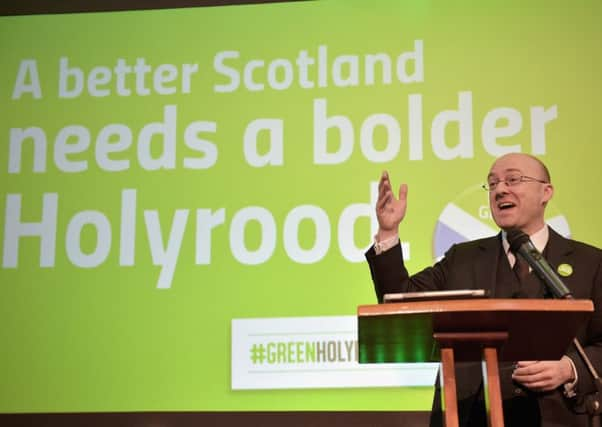Ian Swanson: Game of skittles as small parties battle for votes


They are hoping to pick up list votes from SNP supporters who realise that if the Nationalists are going to win most or all the constituency seats – as the polls predict – it will be much harder for them to pick up extra top-up seats as well.
Referendum Yes voters, the Greens argue, would therefore be better ticking the Green box on the regional lists, thus getting more pro-independence MSPs – with the added bonus of a more radical edge on issues such as fracking and land reform.
Advertisement
Hide AdAdvertisement
Hide AdThe Greens’ membership has soared since the referendum and the party has more resources than ever before, including paid full-time organisers in each of the eight regions.
The aim is to get an MSP elected from each area – and two in Lothian. The Greens can point to the 2003 Scottish Parliament elections as evidence that it can be done, or nearly.
Back then, they won seven seats – two of them in Lothian – in what became known as the “rainbow parliament” because as well as the big main parties it had the Greens, six Scottish Socialist Party MSPs, three independents and one from the Scottish Senior Citizens Unity Party.
This time, the competition on the list will be fiercer – Labour, the Tories and Lib Dems all know that’s where most of their seats will have to come from – which may make it more difficult for the smaller parties to break through. But the way the system works, allocation of list seats can depend on tiny differences in parties’ share of the vote.
Advertisement
Hide AdAdvertisement
Hide AdThe Greens face competition for SNP “second” votes from the new left-wing alliance Rise (Respect, Independence, Socialism and Environmentalism) which embraces the Scottish Socialist Party and the Radical Independence Campaign as well as activists from the broader Yes movement.
The Greens have a couple of former SNP MSPs, John Finnie and John Wilson, who quit over the SNP’s policy on Nato, standing for them. Rise has another, Jean Urquhart, fighting under their banner. But the Greens claim in contrast to their own well-established profile, Rise is virtually unknown and will struggle to attract support.
Rise, on the other hand, claims the Greens are underplaying the importance of the independence issue going into the election. A pledge of a second referendum within the lifetime of the next parliament is Rise’s main pitch to voters.
And former SSP MSP Colin Fox, who is Rise’s top candidate in Lothian, argues it is a tactical error by the Greens to make a ban on fracking their flagship policy rather than Scotland’s future. “Independence is the elephant in the room,” he says.
Advertisement
Hide AdAdvertisement
Hide AdHe also claims prominent figures in the Yes movement have already said privately they will give their second vote to Rise and are ready to declare their support publicly in the run-up to the election.
One take on the SNP’s clear lead in the opinion polls is that the smaller parties will benefit because they will not be squeezed as much as if it had been a close race.
But there is a crowded field in the quest for list votes and it is hard to predict how the arithmetic will work out. Despite the example of 2003 and the impressive spread of seats across the political spectrum, it may be a re-creation of that rainbow parliament proves elusive.